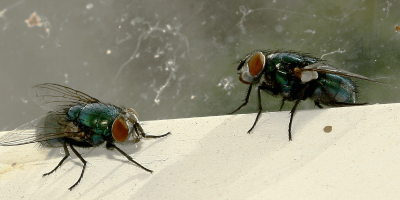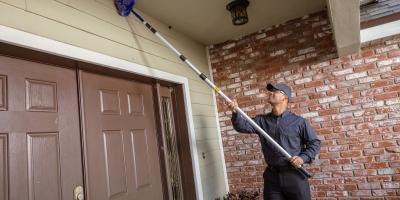Tiny Ants Cause Big Problems in Hospitals

Hospitals are known for their white walls, shiny floors and impeccable sanitation procedures, so you might think they’d also be the last place you might ever find pests. Unfortunately, however, hospital pests can become a real issue, especially if the facility’s pest management is not being handled by a skilled professional.
Common hospital pests include cockroaches, flies, bed bugs, rodents and ants. Ants in particular can become especially troublesome, in part because it’s not your common household ant that is known to scurry these floors – it’s a different beast entirely. Introducing the smallest local pest ant species: the pharaoh ant.
Pharaoh ants get their name from the mistaken idea that they were responsible for one of Egypt’s great plagues circa 1550 BC, which makes sense if you have any experience trying to deal with them; they’re notoriously tenacious and difficult to control, and can quickly become a royal pain in the butt.
An Institutional Problem
Pharaoh ants are commonly found in places with large commercial food operations, like hotels, grocery stores and – yes – hospitals. They prefer warm, humid areas near food and water sources, and build their nests beyond the reach of humans, in walls or behind baseboards.
While they may not have been responsible for any of ancient Egypt’s major plagues, pharaoh ants are quite guilty of spreading other diseases to human populations. Salmonella and group A Streptococcus, a group of bacteria responsible for strep and scarlet fever, are two major pathogens pharaoh ants are known to carry, which is especially dangerous to hospital patients.
In hospitals, pharaoh ants have crawled into patients’ wound dressings and even infiltrated IV bottles, seeking moisture. They’ve also been found underneath sleeping and comatose patients, where it’s warm and humid.
Pharaoh Ants Evade Control Measures
The reason pharaoh ants are so hard to control comes down to their ability to disperse. In a single hospital, there could be dozens of different colonies and if even just one is missed while treating the facility, the overall population can quickly rebound.
Also, some commonly used ant control products have proved to be completely ineffective against pharaoh ants, making it incredibly important to correctly identify the species before treating. If pharaoh ants are treated with these products it will instead cause their colonies to fragment, causing them to spread even further and make them that much more difficult to eliminate.
Because of how hard they are to get rid of (and because of the sensitive nature of hospitals in general), most medical facilities use a more complex and effective pest control strategy called integrated pest management, or IPM.
Hospitals Control Pests Carefully
Integrated Pest Management is an approach that emphasizes prevention, monitoring and risk management to help prevent pest problems from occurring in the first place. If an infestation does occur, IPM prioritizes the lowest-risk, least-toxic options available to treat it. In a hospital setting, IPM is non-negotiable – it’s the only way to treat potential and active pest problems.
JP Pest Services has a specific pest control program custom-tailored for your hospital or other healthcare facility. After almost a century in the business, we understand the nuances of the healthcare environment, as well as the industry-specific standards that govern the healthcare industry.
Schedule a complimentary consult today with a specialized service planner to go over the individual needs of your healthcare facility.



